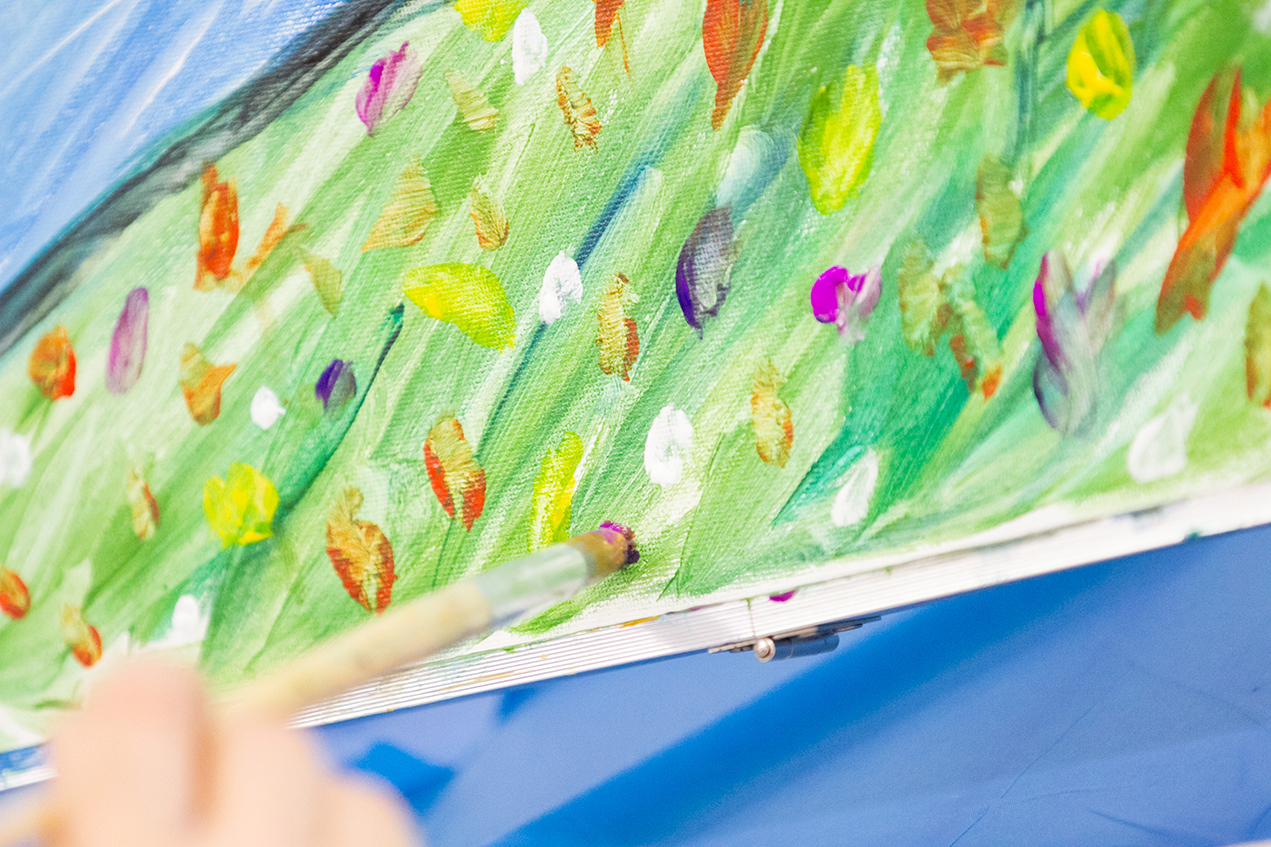A former construction professional, Hernan Umana has retained his passion for creating beautiful, functional homes. Customizing houses used to be a key part of his job, before metastasized prostate cancer put his career on indefinite hold. Now, when art therapist Paige Asawa, PhD, LMFT, from the Institute of Arts in Medicine (IAM) visits him during his chemotherapy sessions at USC Norris Cancer Hospital, he likes to draw and paint the sorts of houses he used to help design and build.
“At this stage of my condition, there’s a lot of down days and it’s only natural to dwell on it,” Umana said. “The activities give you a chance to set it all aside and focus on something pleasant for a change.”
Founded by Jacek Pinski, MD, PhD, associate professor of medicine at the Keck School of Medicine of USC and Umana’s oncologist, IAM has been providing art therapy since October. The overarching mission: to offer patients emotional healing alongside Keck Medicine of USC’s cutting-edge medical treatments.
“Many patients diagnosed with cancer are experiencing psychological components they may have never encountered in their lives,” said Asawa, who also serves as the clinical and academic education director for IAM. “Art therapy helps the patient access what’s happening within them that they don’t have the words to describe. We want to demonstrate that by using these treatments, we’re helping people heal both physically and psychologically through the art process.”
For Pinksi, the benefit of a creative outlet for his patients is clear.
“There’s no question that certain medical procedures and chemotherapy are associated with stress,” Pinski added. “Stress is correlated with the immune system. The immune system plays a critical role in keeping cancer under control.”
IAM has three goals: to offer patients the opportunity to create art in a variety of settings, to develop educational programs in art therapy for USC students and to conduct research that explores the benefits of art therapy and other creative modalities through clinical trials.
“Research is very important because we want to validate creative interventions in the care of patients,” Pinski said. “At USC, we have the infrastructure to conduct clinical trials to study this form of intervention and measure outcomes.”
IAM is developing studies to track patient responses to cutting-edge, arts-based care services. These include virtual reality (VR) studies aiming to decrease anxiety and pain perception during uncomfortable procedures such as bone marrow or prostate biopsies. While wearing a VR headset, patients may select from a menu of immersive musical and visual environments.
“We will measure anxiety levels, depression levels, and stress hormone levels in patients receiving virtual reality, expressive arts therapy, humor therapy or meditation through guided imagery, and compare those patients to a non-intervention control group,” Pinski said of another study, which will focus on hospitalized inpatients receiving chemotherapy.
While Umana is quick to point out that he doesn’t care for acrylic paints, he is fond of colored pencils and watercolor paint. Using them to render homes from his imagination helps him feel connected to his former career.
He also appreciates that Asawa comes to him during his chemotherapy sessions, so he doesn’t have to make an extra trip. This flexibility is a key component of IAM. Patients can participate at the Institute’s main location or in their treatment rooms, whether in an inpatient or outpatient capacity, alone or in groups.
Moving forward, IAM plans to extend its arts therapy services to other patient populations, such as patients with Alzheimer’s disease, as well as to physicians and medical staff at risk of burnout. IAM also is establishing graduate and post-graduate professional and doctoral programs in art therapy, developing internship opportunities for undergraduate art students and creating wellness events for Keck School faculty and staff.
As the program develops further, Pinksi and his team will rely on careful research and metrics to keep IAM’s growth targeted toward the greatest benefit possible for the most people.
“I’ve always believed that merging art with medicine would benefit patients,” Pinski said. “To be successful in science, you have to be a little creative.”
— Eric Weintraub and Kate Faye


